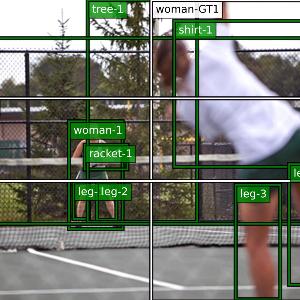Enhanced computer power for AI research in Munich
2 Mar 2021
Technology pioneer: The Munich Center for Machine Learning and the Leibniz Supercomputing Center have installed a new data-processing architecture for AI research.
2 Mar 2021
Technology pioneer: The Munich Center for Machine Learning and the Leibniz Supercomputing Center have installed a new data-processing architecture for AI research.

Image analysis is a field of machine learning. | © S. Sharifzadeh et al.: Proceedings of the AAAI Conference on AI (2021)
Over the past decade, great strides have been made in the field of artificial intelligence (AI), of which machine learning is a core technology. As a result, data-processing architectures are no longer dependent on the execution of explicitly designed programs. Advances in AI now make it possible for relevant structural features to be extracted from huge collections of data, based on prior analyses of carefully chosen ‘training’ datasets. The vital breakthrough in the field came with the development of what are now known as deep learning techniques. These procedures mimic the architecture and interactions of the neural networks in the brain, and make it possible for the system to recognize functional and semantic links within the representative datasets used to train them. However, as the complexity of the learned processing functions has risen, so too has the intricacy of the neural networks involved – and with it the required computing capacity.
The Munich Center for Machine Learning (MCML), in collaboration with the Leibniz Supercomputing Centre (LRZ) run by the Bavarian Academy of Sciences and Humanities, has now installed a top notch computing infrastructure in Garching. “The extra hardware that has now been installed represents the current state of the art, and sets a standard that only the very best AI centers in Germany can hope to match,” says Professor Thomas Seidl, Chair of Database Systems and Data Mining at LMU. In addition, he is one of three Directors of the MCML and a member of the Board of Directors of the LRZ.
The expansion of the LRZ’s infrastructure is specifically designed to fulfil the processing demands associated with AI projects. The new hardware consists of 64 highly specialized ‘Graphics Processing Units’ (GPUs), which are grouped into eight nodes (DGX-A100 nodes sourced from NVIDIA) that are in turn tightly linked to each other to form the complete GPU cluster. “The system is particularly versatile and efficient, and will allow us to move AI research at the MCML onto the next level. In combination with a background memory specifically optimized for AI applications, and an extremely efficient network architecture, the new cluster will permit us to explore new approaches in research areas, such as natural language processing and image analysis,” says Nicolay J. Hammer, who heads the research group on Big Data and Artificial Intelligence at the LRZ. The system is called “MUNICH.ai --- Mcml UNIversal Cluster for High-performance AI”.
GPUs have become the most crucial components of the hardware resources required for research on AI, and applications of deep learning. These processors are capable of carrying out 40 quadrillion algebraic operations in parallel. This level of processing power enables complex functions encoding millions of parameters to be used as training data for neural networks. In essence, deep learning is a mathematical optimization process, in which the learning process modulates the relative strengths of the connections between the nodes of the network – in the same way as happens at neuronal synapses in the brain.
The Munich Center for Machine Learning is a collaborative initiative between LMU and the Technical University of Munich, and is one of six Competence Centers in the field of artificial intelligence that are financed by the Federal Ministry for Education and Research (BMBF). The Ministry’s contribution to the new GPU Cluster at the LRZ amounts to just under 2 million euros. Currently, 18 research groups in the fields of Data Science, Informatics and Statistics, together with teams specializing in applied science – and the Humanities – work at MCML. Its fundamental aim is to stimulate basic research on machine learning, with particular reference to the interface between conceptual advances and their practical applications.